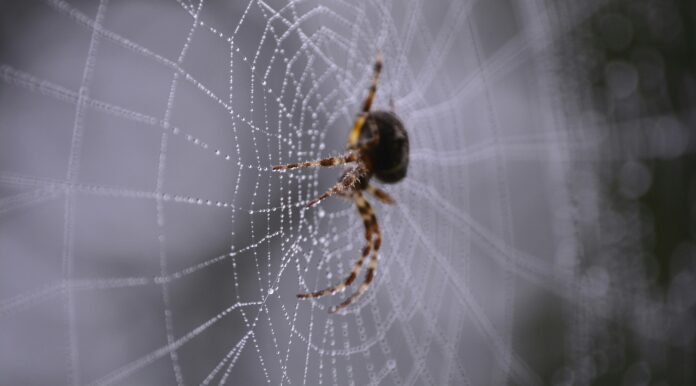Spiders, drugs and NASA might sound like an unlikely mix, but this combination led to one of the most memorable studies in the history of experimental biology. While NASA is best known for its work in space exploration, the agency once turned its attention to spiders to explore how chemicals affect instinctive animal behaviour.
The web as a window into the mind
Spiders do not learn to spin their webs, they just know how. Each thread, spiral and anchor point is laid down in a precise sequence, resulting in a structure that is both beautiful and functional. Scientists realised that any disruption to this process could provide a visible record of how chemicals impact the nervous system.
Swiss pharmacologist Peter N. Witt first explored this idea in the late 1940s. Witt exposed spiders to substances including amphetamines, mescaline, caffeine, LSD and carbon monoxide, then observed changes in their web-building. Some drugs, such as high doses of LSD, caused spiders to abandon their webs entirely. Others, like mescaline, resulted in slightly larger but still recognisable webs. The most dramatic effects came from low doses of LSD, which produced intricate, psychedelic webs that were visually striking but ineffective for catching prey.
NASA’s unusual drug test
Decades later, NASA scientists at the Marshall Space Flight Center revisited and expanded on Witt’s work. Their goal was to find new ways to measure chemical toxicity without using mammals. Spiders, with their reliable web-building routines, offered a unique solution. The NASA team exposed spiders to cannabis, benzedrine (an amphetamine), caffeine and the sedative chloral hydrate, then photographed and digitised the resulting webs for analysis.
The findings were clear. The more toxic the substance, the more chaotic and incomplete the web. Caffeine, surprisingly, produced some of the most disorganised patterns, with spiders failing to finish the sides of their webs. Cannabis and amphetamines led to different but equally disrupted designs. NASA researchers even compared the webs’ geometry to crystal lattices, using statistical tools to measure the degree of disruption. The fewer completed sides in the web’s cells, the higher the toxicity.
Why it matters
The study, published in Life Sciences in 1995, demonstrated that spider webs could serve as a visible indicator of neurological disruption caused by chemicals. This method offered a novel approach to toxicity testing, providing insights into how various substances affect instinctive animal behavior without using higher animals.
It is a reminder that chemicals humans take for granted, like caffeine, can have powerful effects on other species. For NASA, the experiment offered a creative way to visualise toxicity and neurological impact.


